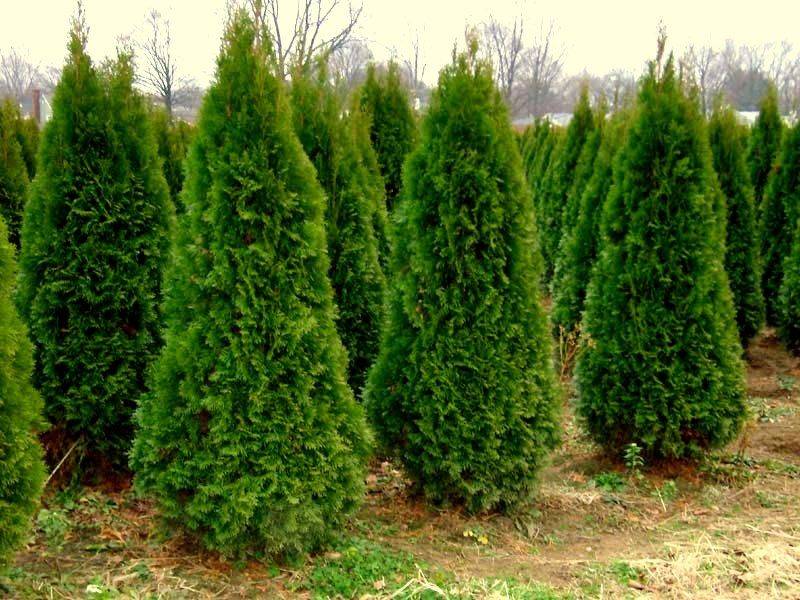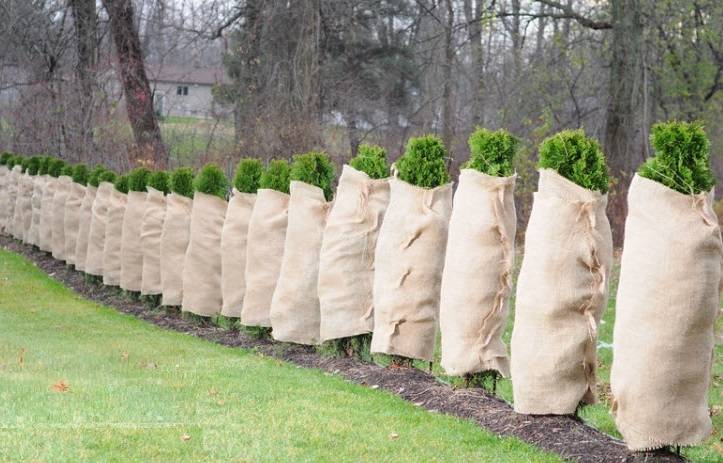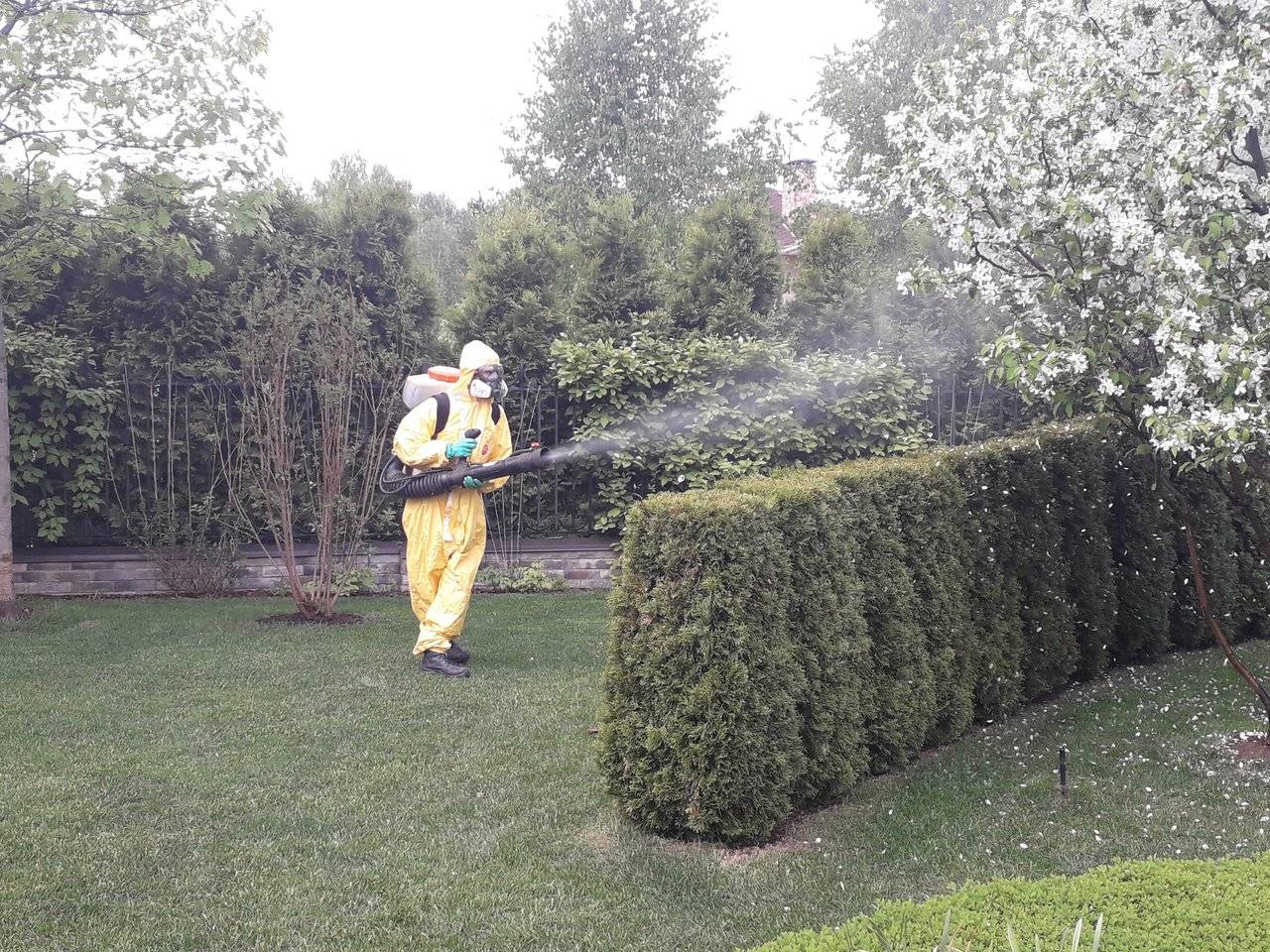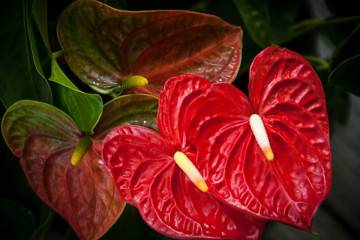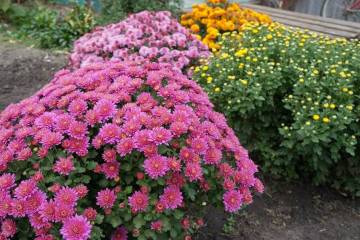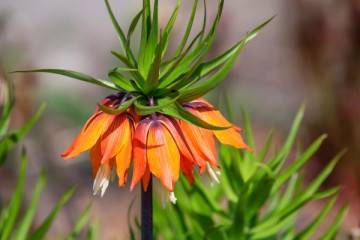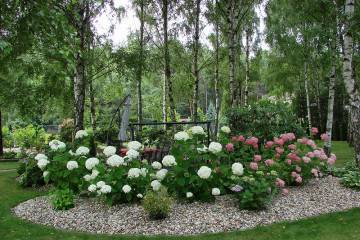Thuja care in spring and after planting outdoors
Content:
In Russia, thuja is mainly grown artificially in garden and park plots. The homeland of a beautiful coniferous plant is the northwest of the American continent and the east of Asia. Thuja care is easy and hassle-free, as it grows well even in the most severe latitudes.
Thuja care
How to care for thuja correctly so that you always have a tree in your garden with a dense and lush crown of a pleasant rich green color? First of all, you need to know about the characteristics of the plant.
There is not much difference in how to care for a thuja in the country, in the garden or at home in a pot. However, the care of thuja may differ depending on the region in which it is grown. For example, pruning in Central Russia is carried out in early May, in the northwestern regions, thuja is pruned in June, and in the south - at the very beginning of March.
Features of spring care
In the spring, they first remove the shelter and the tourniquet with which the tree was pulled. Rotten and frozen branches and shoots are removed. If necessary, you can transplant the bush to a more convenient and suitable place. You need to dig thuja together with a clod of earth at the roots. Be sure to feed with mineral fertilizers intended for conifers.
Summer care rules
In the summer, the main rule for caring for thuja is regular watering. But how often to water the thuja so as not to harm it? Watering frequency depends on climatic conditions. In especially dry periods, watering is watered twice a week, in cloudy and rainy periods, the frequency and abundance of watering is reduced.
In addition to frequent watering, it is necessary to loosen the soil. Experienced gardeners recommend draining the soil after each watering. This will help reduce the likelihood of stagnant water and prevent fungal infections. It is necessary to loosen the soil to a depth of 8-10 cm, no more, otherwise there is a possibility of damage to the root system. To remove dust and dirt from the surface of the needles, spraying is carried out.
In the summer, if desired, pruning is carried out in order to form the crown. Tui generally have conical and spherical crown types, the shapes of which can be easily changed by removing unnecessary branches.
Features of care in the fall and preparation for winter
In the fall, the preparation of the tree for wintering begins. Mineral and organic fertilizers are introduced. If mulching has not been carried out before, it is necessary to carry it out in the fall. The mulch is covered with a layer of at least 7 cm so that it can protect the roots from frost and freezing.
In late autumn, each tree is pulled together with a tourniquet and covered with a well-breathing material.
In the southern regions of Russia, neither young nor adult trees are sheltered for the winter, only they are pulled together with a tourniquet.
In the Middle Lane, it is recommended to cover young bushes with dense material, but not with spunbond. Adult thuja need to be pulled off with a tourniquet, otherwise their branches will be damaged under a layer of snow.
In the northern regions, adult bushes also need good shelter.In addition, so that the trunk does not break, special structures of wood are erected around the tree.
How to care for thujas after planting
Healthy growth is largely dependent on the care of the thuja, undertaken immediately after planting in the ground. Despite the fact that the representative of the Cypress family is not capricious in care, it can lose its lush decorative foliage in the absence of proper attention to it.
When and how to plant
Immediately before planting thuja in open ground, it is necessary to find a place for its cultivation. It is worth choosing open and unshaded areas with nutritious and fertile soil types. The bush planting procedure is carried out in the spring, preferably in April-May.
Open ground planting technology
For good survival, cuttings or seedlings are recommended to be treated with a special preparation heteroauxin. Each seedling is placed in the dug holes and covered with a substrate from fertile black earth, peat or rotted humus. After that, the earth is tamped and watered abundantly with settled water at room temperature.
How often to water
How to water the thuja and how often should it be done? After abundant watering during planting, it is necessary to wait about a week or two with moistening the soil. After this period, the seedlings are watered once a week. On cloudy spring days, watering must be reduced, otherwise stagnation of moisture in the soil will lead to fungal diseases, and the needles will begin to turn red.
In addition to the frequency of irrigation, special attention should be paid to the composition and temperature of the irrigation water. It should not be cold and contain impurities and heavy metals.
Fertilization
In the early stages of growth, it is necessary to monitor the amount of dressings. Do not overfeed plants. It must grow in accordance with its natural development, otherwise it will be weak, it will be difficult for it in the future to resist unfavorable environmental conditions.
After the first application of fertilizers, you can not feed for 2-3 months. The nitrogen content in the soil is extremely important for a young plant. From its lack, foliage primarily suffers and the growth of the bush as a whole slows down. To increase its level, ammonium nitrate is used.
Pest control
Unlike other coniferous representatives, thuja is more disease-resistant. However, she can also get sick and suffer from pest attacks. Basically, thuja suffers from fungal diseases. Of the insects that harm the plant, the most famous are:
- thuja scale;
- thuja aphid;
- Thuja mining moth;
- bast beetle.
To destroy aphids, experienced gardeners recommend sprinkling the trees with karbofos. The miner moth attacks the top of the plant, causing it to rust and turn brown. With these parasites, drugs based on pyrethroids cope well. Spraying is best done in the second half of summer with an interval of at least one week between each treatment.
The scabbard is destroyed by treating the plant with actellic and karbofos preparations. Only the procedure must be carried out before budding begins.
A more serious problem arises when the thuja beetle appears, which seriously damages the bark of the bush. It is recommended to dig up and get rid of the tree so that neighboring plantations do not suffer.
Pruning diseased branches and forming a crown
Thuja pruning can be carried out in order to remove dried and diseased branches, as well as to give the crown the required shape.
Sanitary pruning is mandatory, during which rotten and dry branches are removed. Such a procedure is especially necessary after wintering, when the bush is full of frostbitten branches. Pruning for the sake of crown formation is carried out at will, if the density and shape of the bush are not satisfied.
The frequency of pruning depends on the variety of thuja, more precisely on the speed of their growth. Such varieties as Brabant and Columna are pruned twice a year, Smaragd, Wagneri and Holmstrup are enough and one pruning per year.
When is the best time to prune: in spring or autumn
Unlike fruit plants, conifers must be cut off at a certain time. Branches are removed in spring and autumn. The first procedure is carried out during the budding period and the beginning of flowering. This stops the growth of excess foliage and helps to achieve the required density.
Features of growing thuja in garden pots
In pots, low varieties of the western variety of thuja are often grown. Before planting, it is imperative to purchase a special substrate for thuja or for plants of the Cypress family. You can make a substrate for planting yourself by mixing loose fertile soil with peat and river sand. At the bottom of the pot, it is recommended to lay expanded clay crumbs 2-3 cm thick. Expanded clay will absorb excess moisture with each watering, which is why it will not stagnate in the ground.
It is necessary to choose a container for planting 3 times the volume of a clod of earth at the roots of the seedling. Beginning its active development, the plant requires a lot of space for the growth of the root system.
The pot with a bush is placed in a well-lit place. In winter, if there is a lack of natural light, you can put lamps, and on sunny summer days, remove the thuja in a shaded place.
It is necessary to monitor the moisture content of the soil and air. Thuja requires high humidity, which can be increased by regular spraying of the aboveground part of the bush from a spray bottle.
Tui are beautifully growing representatives of the Cypress family. They are used to decorate not only suburban garden plots, but also park ensembles. The main value of the plant is its unusual coniferous foliage, so it is important to provide proper care for the thuja at home, outdoors and in a pot at home.
